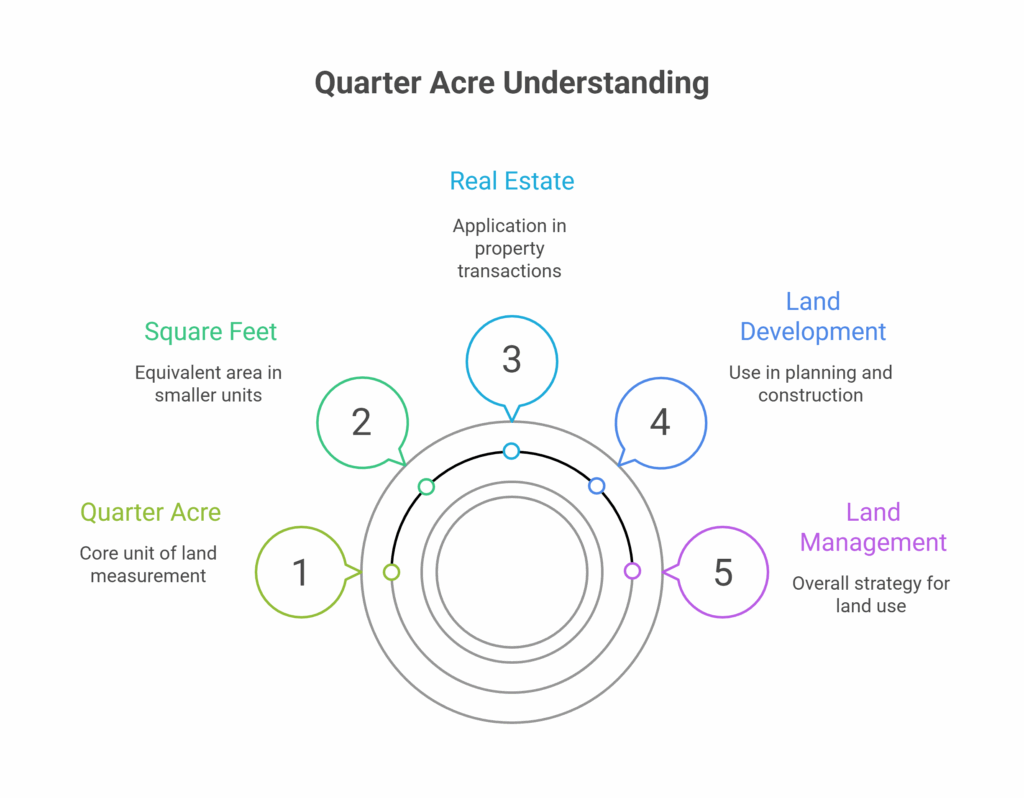Quick Answer: How Many Square Feet in a Quarter Acre?
When you’re trying to figure out land size, the question “How Many Square Feet in a Quarter Acre?” comes up often. An acre equals 43,560 square feet, so a quarter acre is simply one-fourth of that total. Doing the math, 43,560 divided by 4 equals 10,890 square feet. This size is fairly common in residential plots, giving enough space for a modest home, garden, and driveway. Understanding square footage is especially useful if you’re comparing property values, planning construction, or even just imagining how much space you’d have for landscaping.
So, the quick answer is: a quarter acre equals 10,890 square feet, a neat figure to keep in mind for property discussions.
Now let’s dive deeper.

What Is an Acre?
To understand a quarter acre, we need to begin with the basics: an acre. An acre is a unit of land area commonly used in the United States, especially in residential and agricultural real estate. It is equivalent to 43,560 square feet. This measurement stems from historical farming practices, where an acre originally referred to the amount of land that could be plowed in one day using a yoke of oxen.
While many people are familiar with square feet—used to describe the size of homes, rooms, and patios—acres are typically used to measure larger plots of land, especially in rural or suburban settings.
So, How Many Square Feet Are in a Quarter Acre?
Now that we know one acre is 43,560 square feet, calculating a quarter acre is straightforward:
Quarter acre = 43,560 ÷ 4 = 10,890 square feet
That means a quarter acre is exactly 10,890 square feet. This size is considered moderate in suburban developments and can accommodate a single-family home with a decent yard, driveway, and perhaps even a small garden or patio area.
To put this into perspective, most new home lots in suburban America fall somewhere between 0.2 to 0.3 acres—so a quarter-acre lot fits squarely within the norm. It provides enough room for privacy and green space without being overwhelming in terms of maintenance.
What Can You Do With 10,890 Square Feet?
A quarter acre can go a long way, depending on how you plan to use the space. Here’s what you can typically fit:
- A house: Most single-family homes range between 1,200 and 2,500 square feet. That leaves a substantial amount of land for outdoor features.
- Yard space: With a quarter acre, you can enjoy a spacious backyard and front yard—perfect for families, pets, and gatherings.
- Garden and landscaping: Many homeowners utilize the extra space for vegetable gardens, flower beds, or even small water features.
- Parking and driveways: There’s enough room to create off-street parking or a garage without sacrificing yard space.
How Does a Quarter Acre Compare to Other Lot Sizes?
Understanding how a quarter acre stacks up against other common lot sizes can also be helpful:
- 1/10 acre = 4,356 sq. ft.
- 1/8 acre = 5,445 sq. ft.
- 1/2 acre = 21,780 sq. ft.
- 1 acre = 43,560 sq. ft.
So, a quarter acre sits between 1/8 and 1/2 acre, offering a balanced space that doesn’t overwhelm homeowners with too much land to maintain.
Zoning and Building Considerations
When purchasing a quarter-acre lot, it’s crucial to check with the local municipality for zoning rules and building regulations. Local ordinances may dictate what type of home can be built, how much of the lot must remain undeveloped (called setback requirements), and whether additional structures like garages, sheds, or accessory dwelling units are allowed.
Additionally, lot shape can influence usability. For example, a square-shaped quarter acre may provide better layout options than a long, narrow plot with the same square footage.
Why Lot Size Matters to Home Buyers and Investors?
Lot size plays a significant role in property valuation and future flexibility. Larger lots tend to be more desirable in suburban and rural areas, offering more privacy and potential for expansion or resale. A quarter-acre lot often strikes the perfect balance—it’s large enough to provide outdoor living opportunities while remaining manageable and affordable.
For real estate investors, quarter-acre lots also offer strategic advantages. They present potential for future development, including subdividing the lot (if zoning permits), adding accessory units, or building rental properties. These possibilities make quarter-acre lots attractive for long-term investment.
Quarter Acre Lots in Texas Real Estate
In Texas, the real estate landscape is as vast and diverse as the state itself. From urban neighborhoods to wide-open rural spaces, you’ll find all types of property sizes. However, quarter-acre lots are especially common in suburban communities where developers aim to provide a balance between space and affordability.
Whether you’re looking to settle down in Austin, San Antonio, or smaller cities like New Braunfels, understanding land dimensions is crucial. Texas homebuyers often favor larger lots, and a quarter acre offers flexibility without the burden of extensive upkeep.
Final Thoughts
Knowing that a quarter acre equals 10,890 square feet is more than just a math fact—it’s a gateway to smarter real estate decisions. It allows homebuyers, investors, and developers to visualize what’s possible on a piece of land and make more informed choices.
So, whether you’re designing your dream home, evaluating investment potential, or simply exploring the property market, remember: size matters—but it’s how you use it that truly counts.
If you’re considering making a move or investing in land, understanding lot sizes can make all the difference. And if you’re ready to take the next step, there are plenty of house buyers in Texas ready to help turn your real estate plans into reality.
